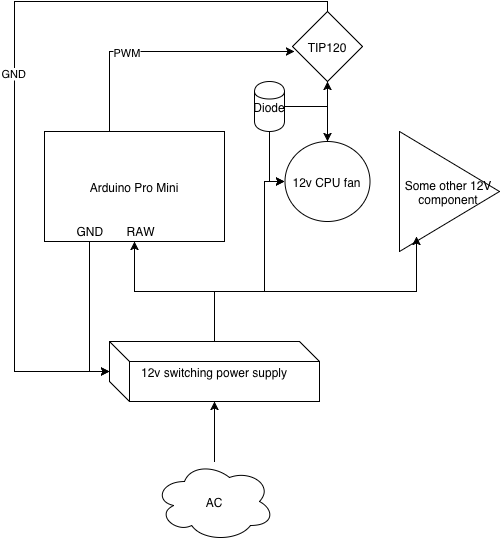I have found a relatively small 12V switching power supply that I want to build into my device, using it to power both the Arduino Pro Mini and a couple of 12V cpu fans.
Am I correct in assuming that I can have the Arduino RAW pin and Fan+ on the same power supply lead? Or do I need to protect the Raw pin in any way? Also, I need to power 2x cpu fans, can this be done with one transistor or do I need one for each fan?
If I stay within the Current specs of my supply (6A) could I keep adding other 12V components on the same +lead as in the diagram below?

